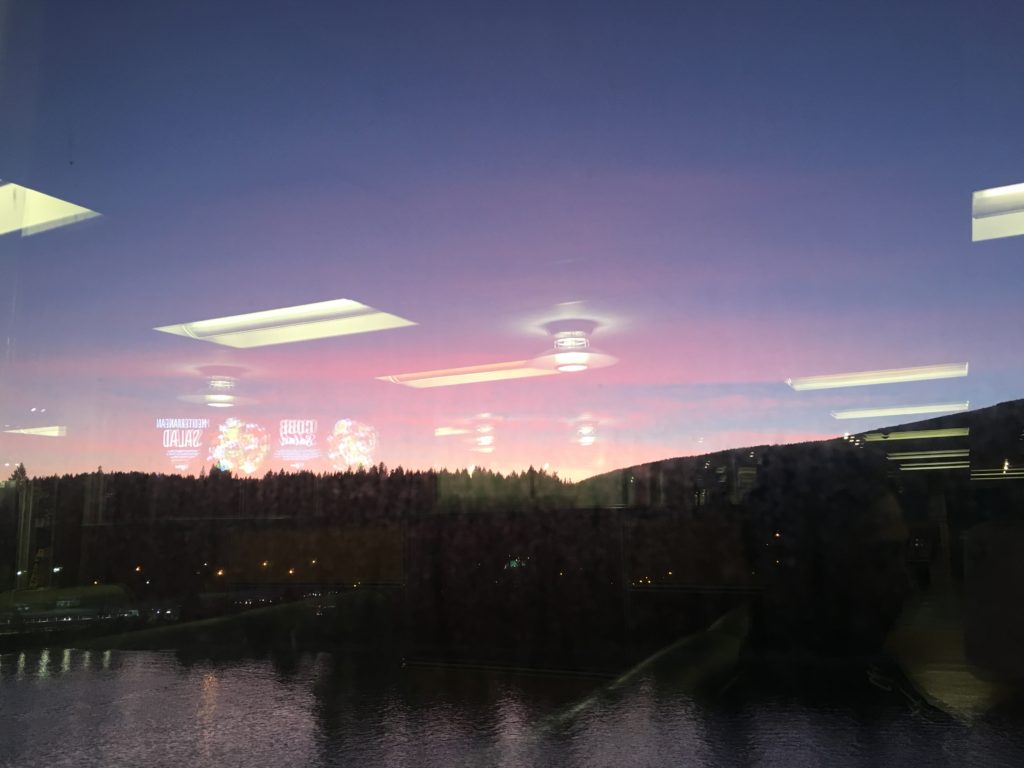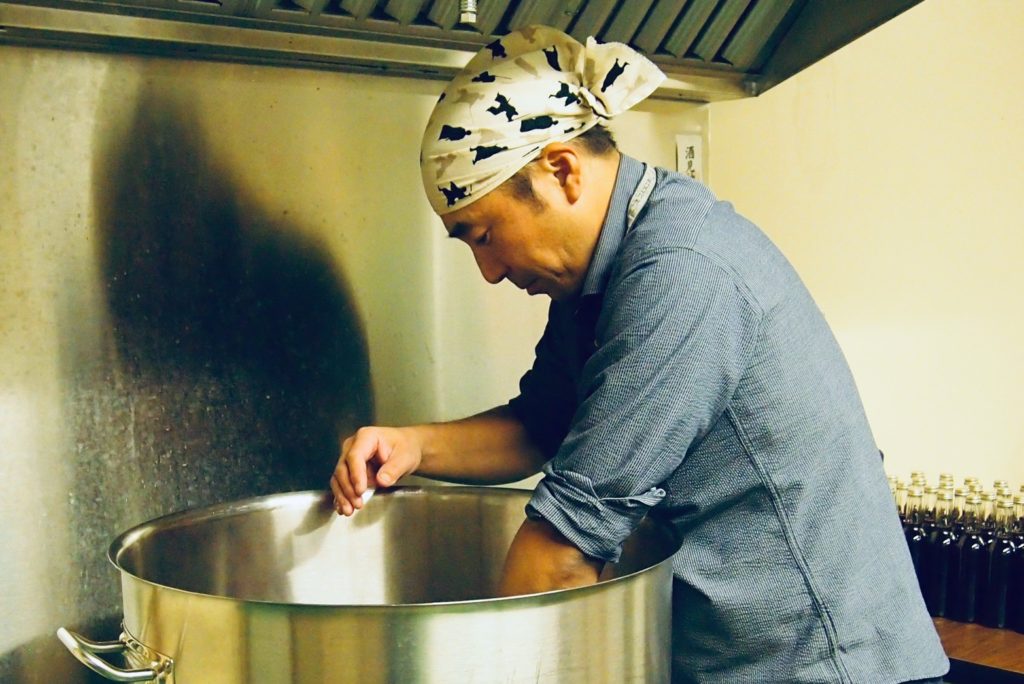
Written by Saki Kimura
As I stepped outside Vancouver airport, the cold October air chilled my breast. I asked for the landmarks of the meeting via short message and the reply was “You’ll know it when you see me”. Looking across the crosswalk from the shuttle stop, I saw a man wearing a dark blue happi coat coming toward me.
We got into a company car parked in a multi-story parking lot in front of the airport. Watching his profile as he spoke in the driver’s seat in a lighthearted tone that made it hard to believe we’d never met before, I was struck by the fact that I was with Y.Kasugai of Twitter.
Y.Kasugai – Yoshiaki Kasugai, the toji (brewmaster) of YK3 Sake Producer in Richmond, British Columbia, Canada, is famous among sake fans on Twitter. Unique background, distinctive speaking style, and a passionate sake theory – however, we don’t know much about his identity.
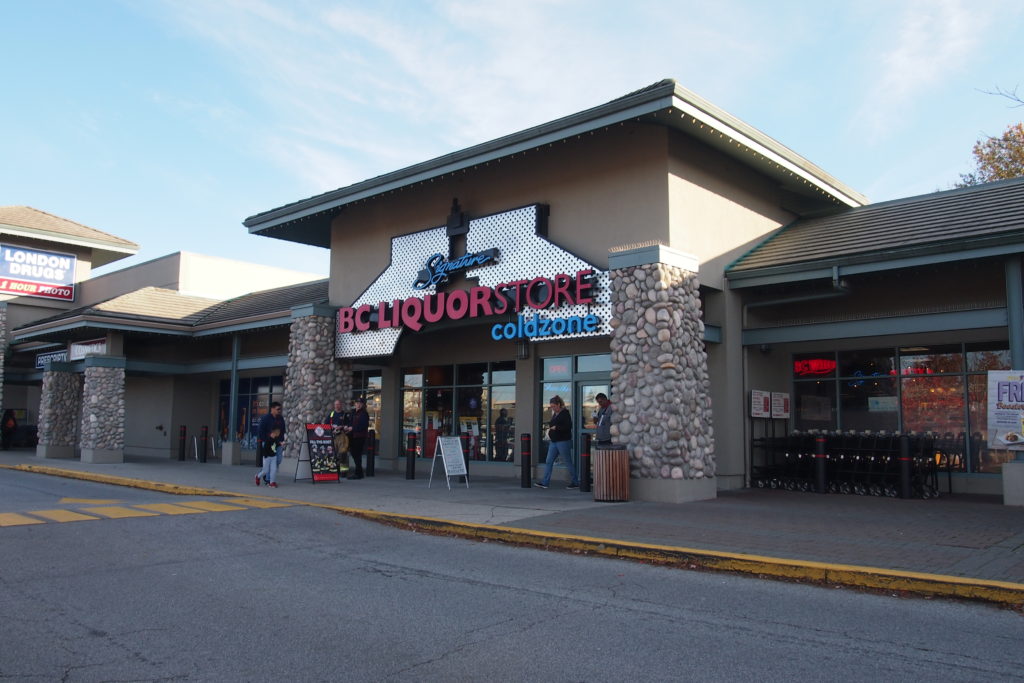
“BC is 2.5 times the size of Japan, but its population is about that of Nagano and Gifu prefectures combined. Alcohol is under the province’s jurisdiction, and its symbol is a provincially-owned liquor store called the ‘BC Liquor Store’. Fifty of those stores are concentrated in an area about the size of Kanagawa Prefecture called Metro Vancouver.”
In the car on the way to the brewery, Kasugai gives me a lecture about the alcohol situation in BC. When I searched for examples of prefectures, I certainly found that they are almost exactly as described. He had come up with examples that are easy for me to imagine, which shows his high level of service spirit.
BC has a strong remnant of late 19th and early 20th century Prohibition. While other provinces across Canada are privatizing the liquor business due to economic policies, BC still places severe restrictions on it.
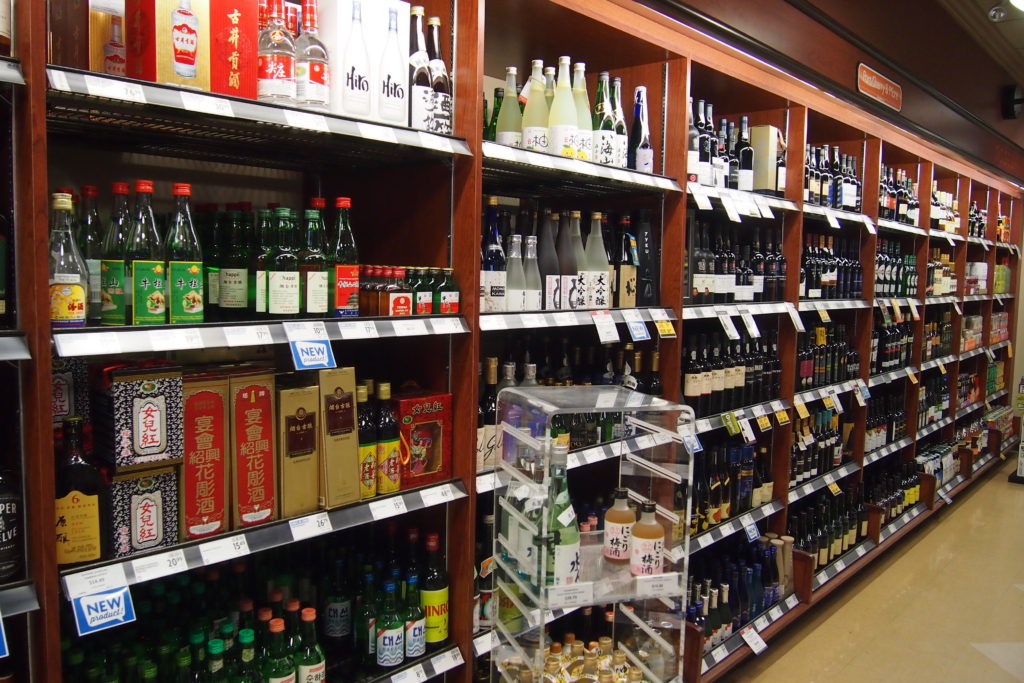
According to Kasugai, all liquor distributed in BC is registered with a “Stock Keeping Unit” (SKU) code, and all buying and selling trends are tracked by the government. In addition to this, a separate registration called “Listing” is required in order to have a liquor carried by the provincially-owned BC Liquor Store.
In foreign markets where the culture of “drinking sake at home” hasn’t taken hold, sake is consumed primarily in restaurants. However, restaurants here can only stock alcohol registered at BC Liquor Stores. That’s why it’s essential to register for a Listing, but there’s a rigorous review process and simply passing the registration doesn’t necessarily mean you’ll be able to get the liquor on store shelves.
“The items on the store shelves can be purchased individually, but everything else is by the case only.” Kasugai sighed as he stared at the windshield. Even if he makes sales to restaurants and they like YK3’s products, if they are not in the stores of the nearest BC Liquor Store, the restaurants are required to buy by the case from the held stock. “The fact that sake can only be purchased by the case is not very realistic in the Canadian situation…”
“Liquor taxes in Canada are not very high, but things like the commission that goes into the provincial third sector are expensive. For example, if we wholesale for $10, the selling price would be about $27… Nevertheless, we have to do our own delivery to the restaurants…” – Kasugai vents all kinds of frustrations on the way to the brewery.
But – why does he make sake in such a restrictive place at all?
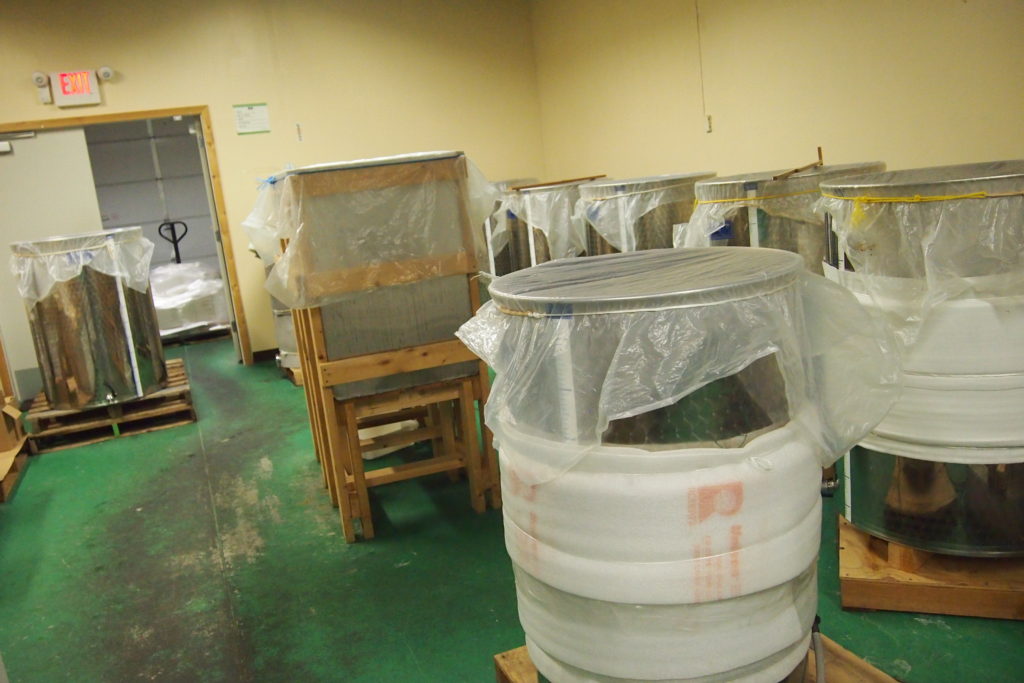
There are many reasons why Kasugai decided to start making sake in Vancouver.
After graduating from university, Kasugai went to work for Olympus, an electronics manufacturing company. But one day, he was curious about the qualifications required to be a sake sommelier (kikizakeshi), so he went to a lecture and heard the president of a sake brewery talk about the lack of young people in the industry.
Kasugai is from Nagano Prefecture, which boasts the second largest number of breweries after Niigata Prefecture. Although he had a secure job at Olympus, he had a nagging feeling; “I want to go back to my hometown and try my hand at brewing.” With this in mind, Kasugai began his job search, in the face of criticism for his decision to quit a big corporation, and he began working at a sake brewery in Nagano Prefecture.
In 2007, he moved to Canada as he got an offer from people who were looking for a brewer to start up a sake brewery there. Though he started making sake called “Keyope” at a local company, Nipro, the company closed down in 2012 due to financial difficulties.
In response to this situation, entrepreneur and consultant Yuki Kobayashi, Yoshihiro Kawamura, founder of New Zealand-based brewery Zenkoku, and Kasugai have teamed up to create the current YK3 Sake Producer. The brewery’s name comes from the fact that the three initials happen to be the same “YK”.
Vancouver has been inhabited by Japanese since before World War II and has a strong Asian subculture. Furthermore, the environment is perfect for sake brewing, with soft tap water and a cool climate. Because Japan doesn’t allow new businesses to produce sake, there were other people in the sake industry who were making plans to brew in Vancouver.
However, once they started, they learned that the liquor business in BC has been challenging. In other words, Kasugai continues to make sake in a situation where there is “no turning back”…
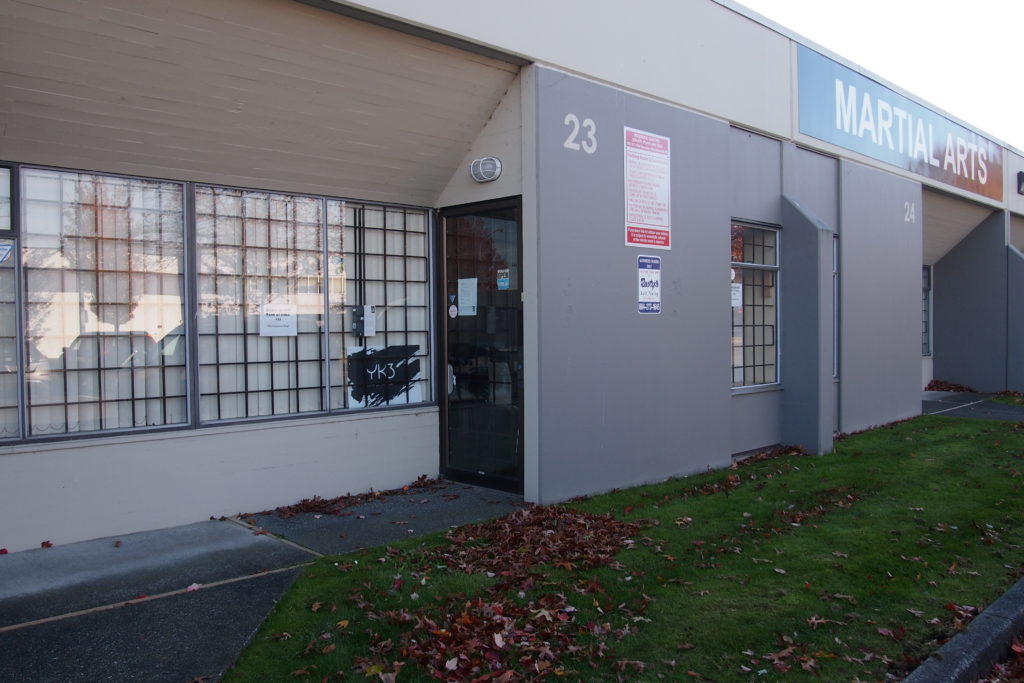
YK3 Sake Producer is located just south of Richmond, near a shopping center full of restaurants, a supermarket, a fitness club, etc. The City of Richmond is part of the Metro Vancouver metropolitan area, an area where more than 50% of the population is of Chinese origin and about 2% of the population is of Japanese origin.
At the corner of a one-story commercial building, I found a small sign that says “YK3 Sake Producer”. “I get scolded that a big sign is no good because it promotes drinking,” Kasugai told me. I opened the door and found an office like space with tables and shelves.
I asked “Do you accept brewery tours?”, but he had already started talking “In BC, the standard for sanitizing a food production facility is bleaching. I asked to be allowed to sterilize with hot water because bleach will affect the microorganisms. In exchange though, the authorities told me I couldn’t allow customers to enter the facility as germs would be brought in if there were too many people coming in and out. When I said it’s okay to have a customer change and put on boots and wash them properly, they said, ‘No, because it’s against barrier-free’.”
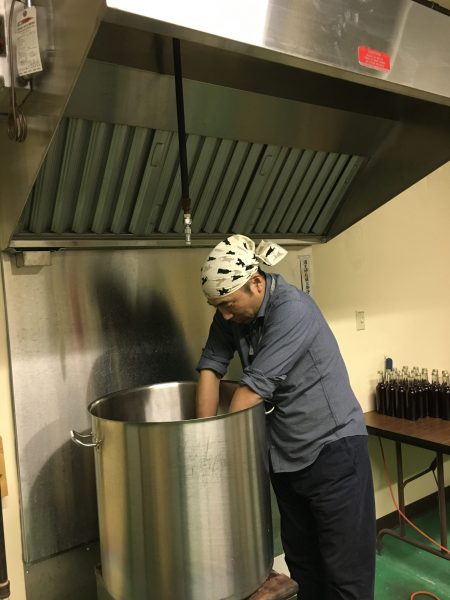
The same goes for the brewing side of things. When I was with him, Kasugai did “hi-ire (pasteurization)” for the berry sake that was made with local blueberries and cranberries. When I looked up at the above the cauldron where the sake bottles were laid out, I noticed that a large range hood was attached to the wall.
“In Japan, all you need is a vent to let the steam out. On the other hand, in Canada, you need to put this in when you install a gas stove. I told them I didn’t use oil though. When the inspector came to see it, he said, ‘Your range hood is clean.’ I told you I don’t use oil!”
He toes the line and listens to what the authorities say thoroughly, even where he might be able to fudge or negotiate the rules somewhat. That’s Kasugai’s style.
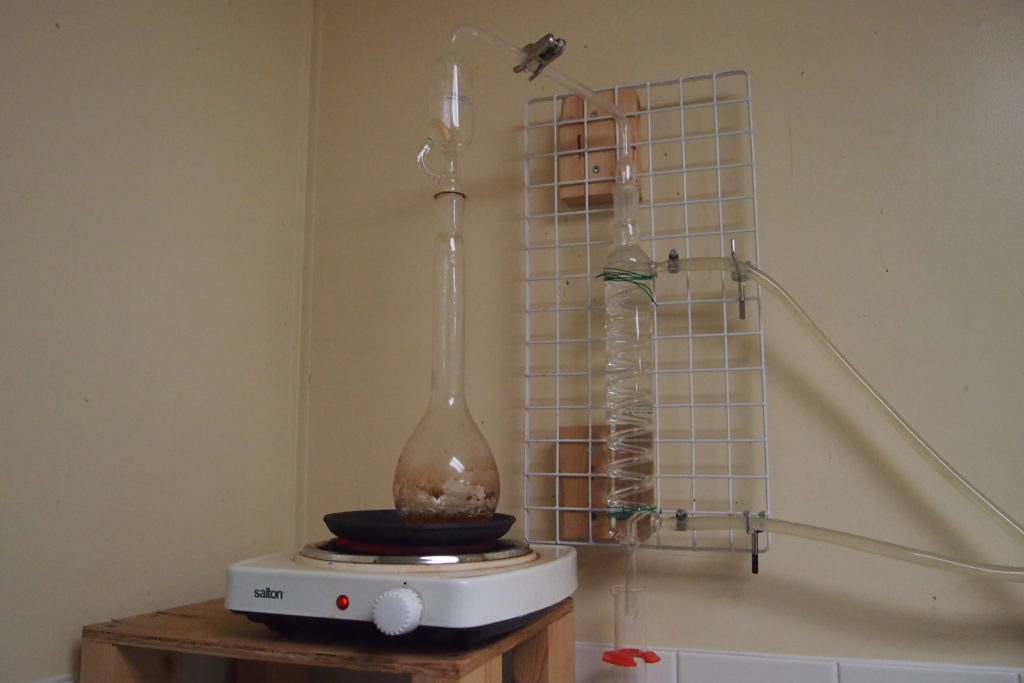
That day, he bottled 20 cases by himself, a total of 240 bottles, and fired them up. It’s all done by hand.
“We had the idea of buying a bottling machine, but buying from the US or Japan would be complicated because it would cross the border and would be difficult to maintain. Finally we decided to pack by hand until the product gets sold well. The volume is small in fresh rotation, and it’s ultimately faster to hand-pack than a bottling machine.”
Mechanization may improve the quality. However, if it breaks down, it will be difficult for a maintenance specialist to come to Canada to fix it, and Kasugai won’t be able to produce the same quality sake. As you can see, many of YK3’s tasks disregard efficiency and Kasugai just works hard. He made the distillation equipment to measure the alcohol content by hand with materials he collected.
“Since I didn’t know the word for a dedicated heater, I’m pulling an electric stove and a steak griddle. I found out later that it’s called a mantle. You would have a hard time if you don’t know English.”
According to Kasugai, even though modern brewing equipment has been mechanized, sake making has been done since the days when there were no machines to begin with. “Instead of relying on a machine, I’m going to try to figure out the principle behind it and break it down to see how I can do it.”
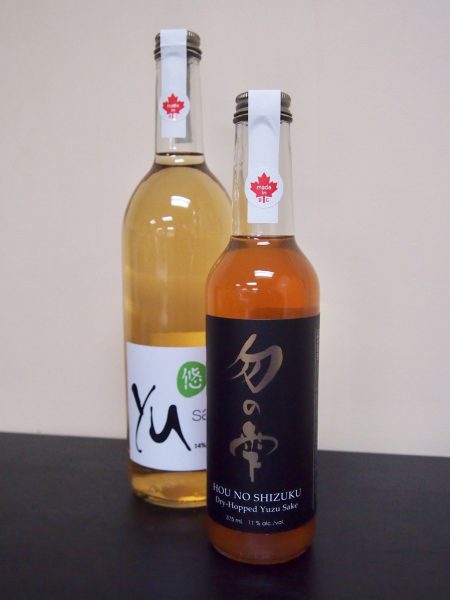
Many local breweries in North America produce nama (unpasteurized) sake due to working costs: on the other hand, the main product of YK3 is nama-chozo, a kind of single pasteurized sake heated once after bottling. This is due to the fact that there are only a very limited number of places in BC where nama can be sold, given the storage environment in stores. It’s delicious when it’s freshly made, but the taste becomes even more flavorful as it matures. Kasugai designs it in anticipation that wholesalers and buyers keep it for a while.
The name of the brand is “Yu,” They use the word as it is easy for people in Canada to pronounce, and it means “calming” and “sake for YOU”. They use California-grown Calrose rice, which is the mainstay of sake production in North America, and filtered tap water from melting snow in Vancouver.
Their signature product, Junmai sake with 70% polishing ratio, has a rich sweetness that is reminiscent of maple, mitarashi dango (rice dumpling in a sweet soy sauce) and nuts, yet it finishes smoothly on the tongue. Rich and complex, while dry on the finish – it’s a unique flavor that makes you want to pair it with Chinese or Southeast Asian food rather than Japanese food.
“Some Japanese people say ‘This is not sake.’ But it’s made in a primitive way, so this might be what sake tasted like in the past,” Kasugai said. “Some of our Canadian customers tell us they like our sake better, saying that the Japanese sake doesn’t taste like rice. Sometimes people ask me ‘Why don’t you make it like you did in Japan?’ but what’s the point of making the same thing here?”
In addition to regular products such as Junmai-Ginjo, Nigori and All Koji, they also produce limited-edition products. At the time of this interview (October 2019), they had just released a hop and yuzu sake “Hou no Shizuku”, a collaboration with local beer brewery Fuggle & Warlock Craftworks.
“I’m actively engaged in tasting events and collaborations. If I don’t expand the market, it doesn’t make sense. I’m trying to figure out how to tap into the latent demand of people who originally thought they didn’t like sake and couldn’t drink it.”
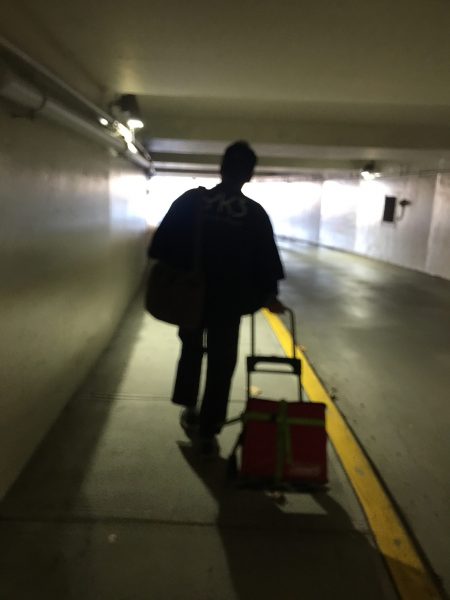
We moved from Richmond, where the brewery is located, to downtown Vancouver. We inched through traffic and finally parked in the parking lot of Horseshoe Bay in West Vancouver. Dragging a cart with a case of sake on it and flapping his happi coat in the sea breeze, Kasugai headed for the ferry dock.
Shortly after the founding of YK3, Kasugai planned to develop a new market, so he took a ferry to Vancouver Island and jumped into a restaurant in Victoria to sell his products. However, since it was difficult to gain credit for a one-time meeting, Kasugai began to take a ferry to Victoria every month. To avoid wasting transportation costs, he visited not only the restaurant from his first visit, but also a variety of restaurants and private (not state-operated) liquor stores. As a result, the brewery has now expanded its sales channels to include Nanaimo and Comox, as well as the entire southern half of Vancouver Island.
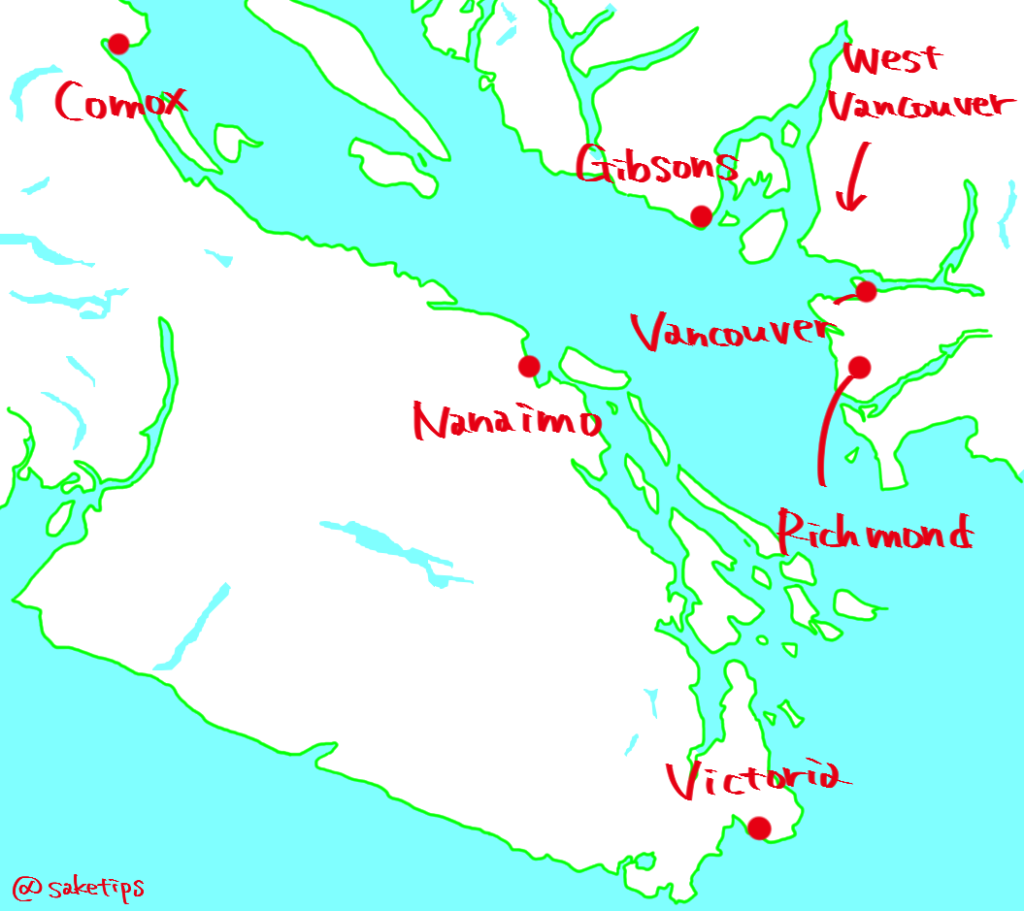
Seagulls lined up on the docks looking up at the ferry as it began to move. Watching the sunset from the window, Kasugai pointed to the surface of the sea and said, “Look, there’s an otter over there.” Seals and orcas can sometimes be seen here. By the time the ship reached the other side of the ocean, we went downstairs from the guest room floor. The ferry began to open the heavy doors even before it reached the shore. From inside of the moving ship, we could see the deep-colored sea swaying.
Cowering in the cold, we lined up at the stop to wait for the bus to arrive. This is a village called Gibsons, in an area called the Sunshine Coast. The sun had set and the sky was beginning to turn purple. We were surrounded by mountains, except for the area where the ferry had landed.
”……..Kasugai-san (Mr. Kasugai), what the hell are you doing here?”
My words poked out of my mouth without a second thought. Kasugai tilted his head, wondering if he heard me or not. It’s hard to believe that I came here to investigate sake making. It’s extraordinary – but for Kasugai, this is an ordinary day.
A bus driven by a female driver took us up the mountain road, to drop off a case of sake at Sushi Bar Nagomi, and then we headed to Gramma’s Cold Beer & Wine, a privately owned liquor store.
As Kasugai says “There are some stores that started out carrying only our sake, but now carry other companies’ sake as well,” It is not uncommon for customers who started drinking sake from YK3 to buy imported sake from Japan or sake made in other countries. Local sake is the gateway to sake for the international non-drinkers who hadn’t been drinking sake before. If sake is produced and consumed in Canada, it will lead to the consumption of Japanese and other countries’ sake in the region.
Sake’s recognition abroad is increasing every year, and the amount of exports is also increasing. Sake is one of the most highly anticipated items for the Japanese government. When I asked him how BC was doing, Kasugai clammed up and said, “It’s changing a little bit… but Canada is called a ‘mosaic’. In Japan, you can convey the message to the people in the city by getting in the newspaper. In contrast, in Canada, the message is only conveyed within the same race in the city.” Canada is home to many different races, but although they respect each other’s cultures they often do not mix.
In other words, he has no choice but to steadily expand his product in this way.
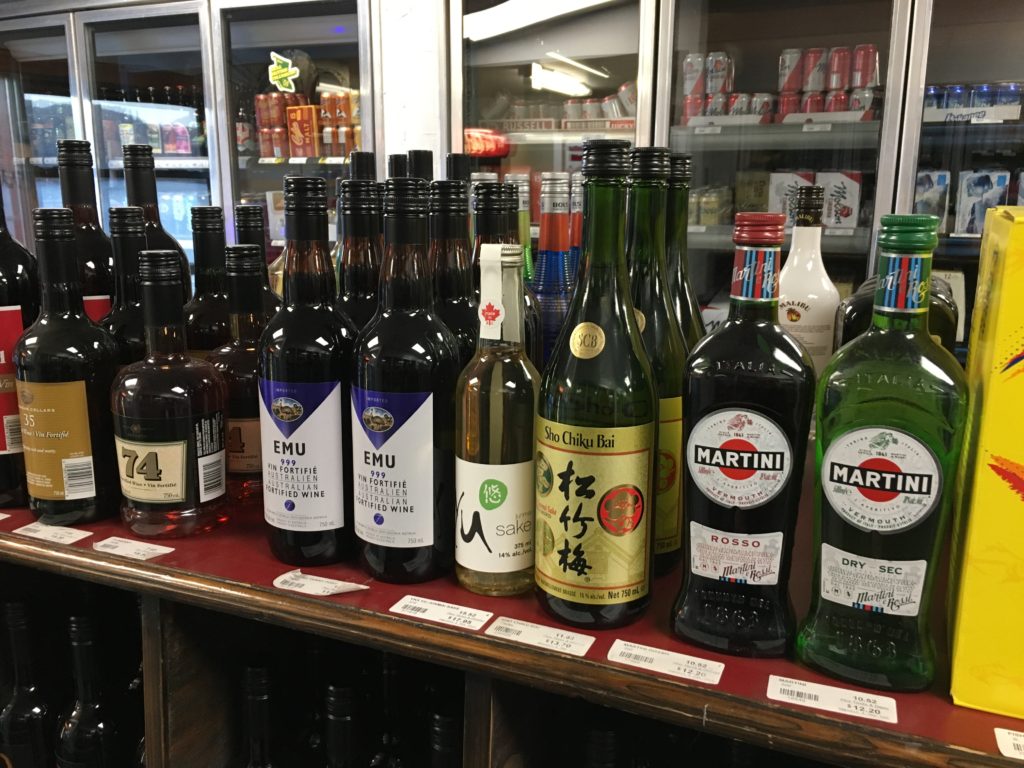
I had a pint of beer at the craft brewery while waiting for the bus to take us to the harbor under a darkening sky. We boarded the bus and boarded the ferry again, crossed the dark waters where there was no longer a shadow of an otter in sight. On the boat back to the main island of Vancouver, I remembered our conversation at the brewery.
“Kasugai-san, do you like making sake?”
I asked this question as I watched him move impatiently between the water feature and the huge stove. After a slight pause for words, the reply was, “Of course, I love it!”
The night in Vancouver are quite chilly. After dinner, Kasugai dropped me off at my hotel, and then headed back to the brewery.
There may be a reason why he can’t turn back – but still.
To create sake in this beautiful and magnificent natural environment, to open up new sales channels with his own feet, and to awaken people who have never tasted sake before to its charms through the sake he creates – those joys may be what makes this happi coat cut the headwind of Vancouver.
